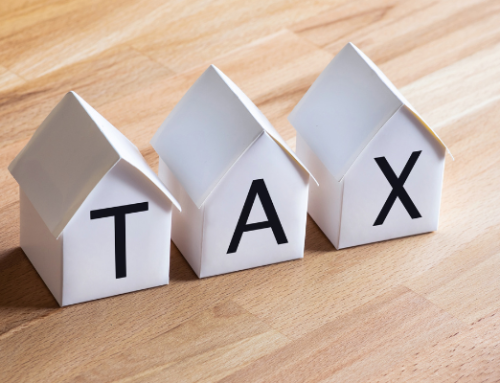In construction and real estate, maintaining enough cash on hand is an important strategy to navigate uncertain markets and maintain profitability. 1031 exchanges, a popular tax deferral strategy for real estate investors, can still create significant tax liabilities if investors aren’t careful.
1031s and the Tax Impacts of Boot
In 1031 transactions, boot refers to any cash or proceeds in a 1031 exchange. Any amount of boot will trigger tax liabilities. It includes anything that’s not considered a like-kind exchange, like:
- Cash
- Property that doesn’t meet the IRS definition of real property
- Debt relief
There are two types of boot: cash and mortgage. Cash boot is any cash receipt after the exchange whereas mortgage boot involves new liabilities that occur when a loan or other debt is reduced from one property to another. Even if a taxpayer doesn’t receive any cash from the exchange, mortgage boot can still result in capital gains tax.
Taxpayers would need to be aware of any credits listed on an exchange settlement statement, as these represent funds paid out that would then be taxable. Common oversights to avoid are:
- A credit back to the taxpayer for the hand money, or the initial deposit, they paid for replacement property
- The solution: specify that the exchange proceeds would pay for the hand money
- A credit back to the taxpayer for property taxes, rent, or security deposit amounts
- The solution: instruct the seller to pay these items outside of the exchange
- Combining exchange proceeds with a high-balance loan to pay down the debt
- The solution: lower the loan amount or reduce the principle on the settlement statement accordingly
The value of the 1031 exchange can also be lost if the taxpayer intends to take part of the cash and defer a portion of the gain. Since cash would be distributed, the gain gets assigned to the cash first. Ultimately, there would not be any 1031 exchange benefit.
Common Pitfalls and How to Avoid Them
Missed deadlines, mismatched assets, withdrawals of any kind, and selling a property without an exchange are four common pitfalls that can trigger a taxable event with 1031 exchanges.
Timing
Because 1031 exchanges require a replacement property to be identified within 45 days and 180 days to close on it, it’s possible for taxpayers to run into issues if they miss one of the deadlines. It’s a good idea to have one or more replacement properties in mind before starting a 1031 transaction.
There are different ways to structure the transaction depending on the real property assets involved. Regardless, timing still matters and is key to avoiding capital gains on the sale of the original property.
Type of Asset
The type and value of the replacement property matters. To avoid taxes, the replacement property must be valued at least the same or more than the original property.
Personal property cannot be used in 1031 exchanges; however, there is a safe harbor rule wherein taxpayers can include up to 15 percent of the replacement property’s fair market value in the transaction.
Withdrawals
The entire sale proceeds from the original property must be used toward purchasing the replacement property. Any withdrawal can be considered taxable.
This is also true if a taxpayer elects to pursue the transactions alone, even if all sale proceeds towards the replacement property. To avoid any negative tax consequences, a qualified intermediary must be used. This individual or holding company keeps the sale proceeds in escrow until the new property closes. There are rules for selecting a qualified intermediary and failure to do so can result in the 1031 exchange losing its tax-advantaged status.
A Closer Look: “But I didn’t take any cash out of the 1031 exchange!”
In reality, certain items are treated as if there was cash taken out at closing. These items include:
- Prepaid rent listed in the closing statement as due to the buyer.
- Security deposits transferred to the buyer.
- Escrow funds to cover certain repairs
- Payment of Real Estate taxes
- Loans costs on the acquired property mortgage
It doesn’t matter if the expenses relate to the property or whether the taxpayer receives a check. When funds are disbursed from the exchange proceeds – and used for something other than the exchange itself – taxable gains will be incurred.
Selling Replacement Property without a 1031 Exchange
Years of tax deferrals can also be undone if a seasoned investor decides to sell any remaining real estate holdings during their lifetime without a replacement property in mind. If the replacement property is sold outright, the original deferred gain plus any gains on the new property will be subject to tax. That can be a substantial tax liability.
Instead, the property can be passed down to heirs. When that happens, the property is stepped up in basis to fair market value. Any prior capital gains deferment would be eliminated; it’s like starting fresh for the new inherited property owner.
If a replacement property must be sold in the taxpayer’s lifetime, waiting at least one year to do so is better than offloading the property sooner. Long-term capital gains rates are lower than short-term capital gains, which are taxed at the ordinary rate.
While some 1031 exchanges can be straightforward, most can become complex – quickly. It’s always wise to work with a trusted advisor ahead of time to plan a strategic approach to real estate transactions. For more questions, contact Jennifer French, CPA, Team Leader of PBMares’ Construction & Real Estate group.





